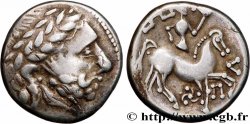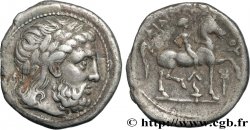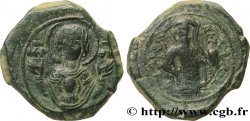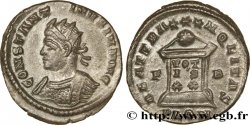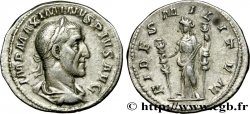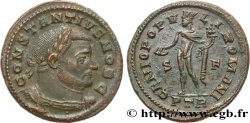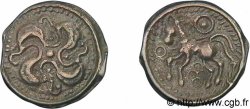bga_637966 - CELTI DEL DANUVIO Tétradrachme “au cavalier et à la couronne”
non disponibile.
Articolo venduto sul nostro negozio (2021)
Prezzo : 750.00 €
Articolo venduto sul nostro negozio (2021)
Prezzo : 750.00 €
Tipo : Tétradrachme “au cavalier et à la couronne”
Data: c. IIe-Ier siècles AC.
Metallo : argento
Diametro : 25 mm
Asse di coniazione : 9 h.
Peso : 12,94 g.
Grado di rarità : R3
Slab

NGC :
Commenti sullo stato di conservazione:
Exemplaire sur un flan parfaitement centré des deux côtés. Belle tête stylisée de Zeus au droit. Revers énigmatique. Belle patine de collection ancienne avec des reflets dorés
N° nelle opere di riferimento :
Pedigree :
Exemplaire sous coque NGC XF (Strike 4/5 et Surface 4/5)
Diritto
Titolatura diritto : ANÉPIGRAPHE.
Descrittivo diritto : Tête barbare laurée et barbue de Zeus à droite, grènetis ; le visage est bombé et la barbe proéminente ; grènetis circulaire.
Rovescio
Titolatura rovescio : ANÉPIGRAPHE.
Descrittivo rovescio : Cavalier nu au pas à droite, tenant une palme de la main droite ; derrière le cavalier, un oiseau ; un rameau sous le cheval.
Commento
La volute placée derrière le cavalier est en fait un oiseau et une déformation d’un casque à cimier ou les restes d’une couronne. En revanche, le type trouve bien son inspiration dans le monnayage de Philippe II de Macédoine après 348 avant J.-C. Le rameau placé sous le cheval est particulier et rappelle certains revers de Philippe II.
The scroll behind the rider is actually a bird and a distortion of a crested helmet or the remains of a crown. On the other hand, the type does find its inspiration in the coinage of Philip II of Macedon after 348 BC. The branch placed under the horse is unusual and recalls certain reverses of Philip II
The scroll behind the rider is actually a bird and a distortion of a crested helmet or the remains of a crown. On the other hand, the type does find its inspiration in the coinage of Philip II of Macedon after 348 BC. The branch placed under the horse is unusual and recalls certain reverses of Philip II







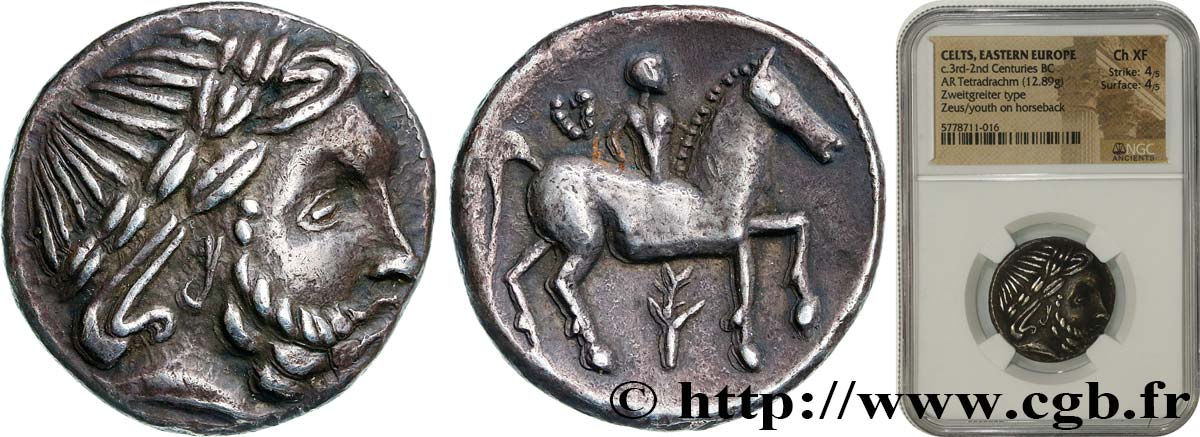
 Segnalare un errore
Segnalare un errore Stampate la pagina
Stampate la pagina Condividi mia selezione
Condividi mia selezione Fai una domanda
Fai una domanda Consegnare / vendere
Consegnare / vendere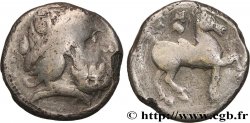
 Descrittivo
Descrittivo